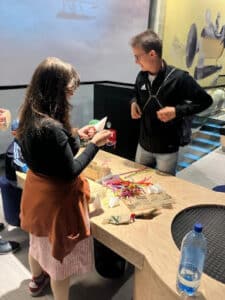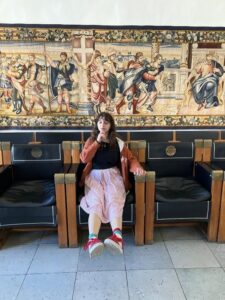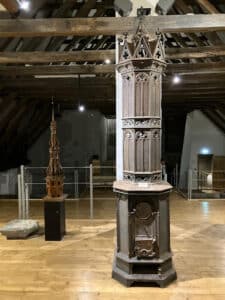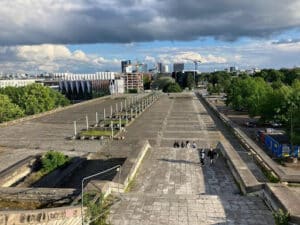The following was written by Alexander Branscom, an International Relations major at American University who spent the summer of 2024 studying Russian as a Second Language in Riga with SRAS.
Logistics – Tallinn from Riga
When to Travel: If possible, prioritize planning your trip to Tallinn around the first Sunday of the month, since every city-run museum is mandated to grant free admission. This makes that Sunday the perfect day to knock out many museums cheaply.
Transport: I used Omio to book a bus ticket to Tallinn. A round trip should range from 20-40 euros, and each bus comes with spacious seating and is usually empty enough that students can sit wherever they want. The trip takes around four and a half hours, but time passes quickly with a good audiobook or some music. Remember to bring your passport and to be at the bus station well before the bus arrives because these buses always leave on time, on the dot.
Housing: In Tallinn, I would recommend that travelers use Airbnb as it is extremely affordable and travelers can stay close almost any location they would like. When my group went to Tallinn we managed to get a place for 90 euros a night which, split between the four of us, comes out to just 23 euros a night, which is fantastic considering that we were staying in the heart of downtown. Using Airbnb does require some planning in advance as it is generally better to reserve a spot well in advance to get the best deals.
What to See in Tallinn
St. Olaf’s Church was the tallest building in the world from 1549 to 1625, and its spire still dominates Tallinn’s skyline, offering breathtaking panoramic views of the city and the Baltic Sea. For a couple of euros travelers can climb up a narrow winding stairwell that takes them to the top of its huge, pointed, copper green roof and the breathtaking views to be had from there. Originally built in the 12th century, it has undergone several reconstructions and renovations over the centuries, with its most notable Gothic architectural elements and the impressive spire being added during the 14th century. Inside this historic Catholic church, you’ll find intricate woodwork and beautiful stained-glass windows, all of which managed to survive Communism intact.
The Estonian Maritime Museum is a must when visiting Tallinn as it has long been a hub for maritime trade. Located in the North of Tallinn inside a former seaplane hanger stands the Estonian Maritime Museum. This museum allows travelers to walk along high catwalks and see boats from throughout history suspended next to them, each with their own unique story. The main attraction of this museum is the Lembit. The Lembit is a submarine built for independent Estonia by a British engineering firm. It was intended to help the small country defend itself in it then-still relatively new independence which it held from interim years between WWI and WWII. It eventually entered Soviet service after the Soviets took over Estonia after the war and, when it was finally retired in 2011, was the longest continually serving submarine in the world. Visitors are able to go inside of this submarine and walk around and take pictures making this a great stop for any history fans looking for a unique experience.
The Old Town Hall now contains a museum dedicated to the history of the governance of the city. This museum includes the history of Swedish rule over Estonia, as well as the history of the building’s architecture, how laws were passed, and how mayors were chosen. While this museum is interesting, I would recommend skipping it if you are short on time as the museum isn’t incredibly interactive and covers a very niche facet of Estonian history.
The Abandoned Olympic Stadium is a short walk from the Estonian Maritime Museum lies an abandoned Olympic stadium that hosted sailing events during the 1980 Moscow Olympics. Originally called the “V. I. Lenin Palace of Culture and Sport,” today it is known more popularly by locals as “Linnahall.” Most of the complex has been out of use for decades, but it still remains a popular place for locals to come to relax and fish. Art fans can enjoy the prolific graffiti and street art that covers this abandoned building, making it into something of a giant urban art piece. You can take a pleasant walk from atop the stadium and all the way to the connected pier.
Kiek in de Kok Museum and Bastion Tunnels allows travelers to walk along the old city walls of Tallinn and explore their history. Every tower along the hall has its own unique purpose and history. For example, there is a stable tower and the Maiden tower. This museum provides an excellent overlook of the old town as well as providing travelers with insight into Tallinn’s history of fortifications, which is particularly interesting as many of these fortifications are still standing today and give Tallinn its iconic look.
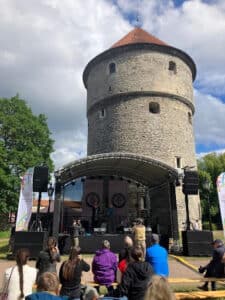
Where to Eat in Tallinn
Olde Hansa is where to go if you are looking for authentic foodie culture (and are willing to pay for it). Olde Hansa in Tallinn offers a unique medieval dining experience, taking you back to the times of the Hanseatic League. The restaurant is decorated with medieval paintings, wooden chandeliers, and candles. Staff members dress in period attire. Their extensive menu of medieval dishes includes game platters with elk, wild boar, and bear, as well as the Neptune platter featuring fish and game sausages. If you want to really indulge, the “Master of the Feast” – a degustation of 17 period dishes.
Burger Box is a little burger bar restraurant with its own miniature arcade and back porch area. It has a vibrant and lively atmosphere. The burgers here were very large, I don’t think anyone in my eight-person group could get through all their food. They only serve burgers though they have a bunch of variations including Korean chicken burgers and vegetarian burgers. The average price of a meal is around 10-15 Euros, but it will leave you full for hours.
Café Maiasmokk is located in the middle of the old town and is Tallinn’s oldest café, in operation since 1864. It’s a French-style café, with fairly extensive drinks menu (with wine, coffee, tea, and cocktails), and a limited but very interesting food menu. The place is really known for its pastries and deserts as well as its atmosphere; the interior design looks like it is straight out of a history book. While a little on the expensive side, the quality of the food justifies it, making this place not a bad deal for breakfast or lunch. I recommend the fruit smoothie which was prepared in a matter of minutes and was very refreshing.
You Might Also Like
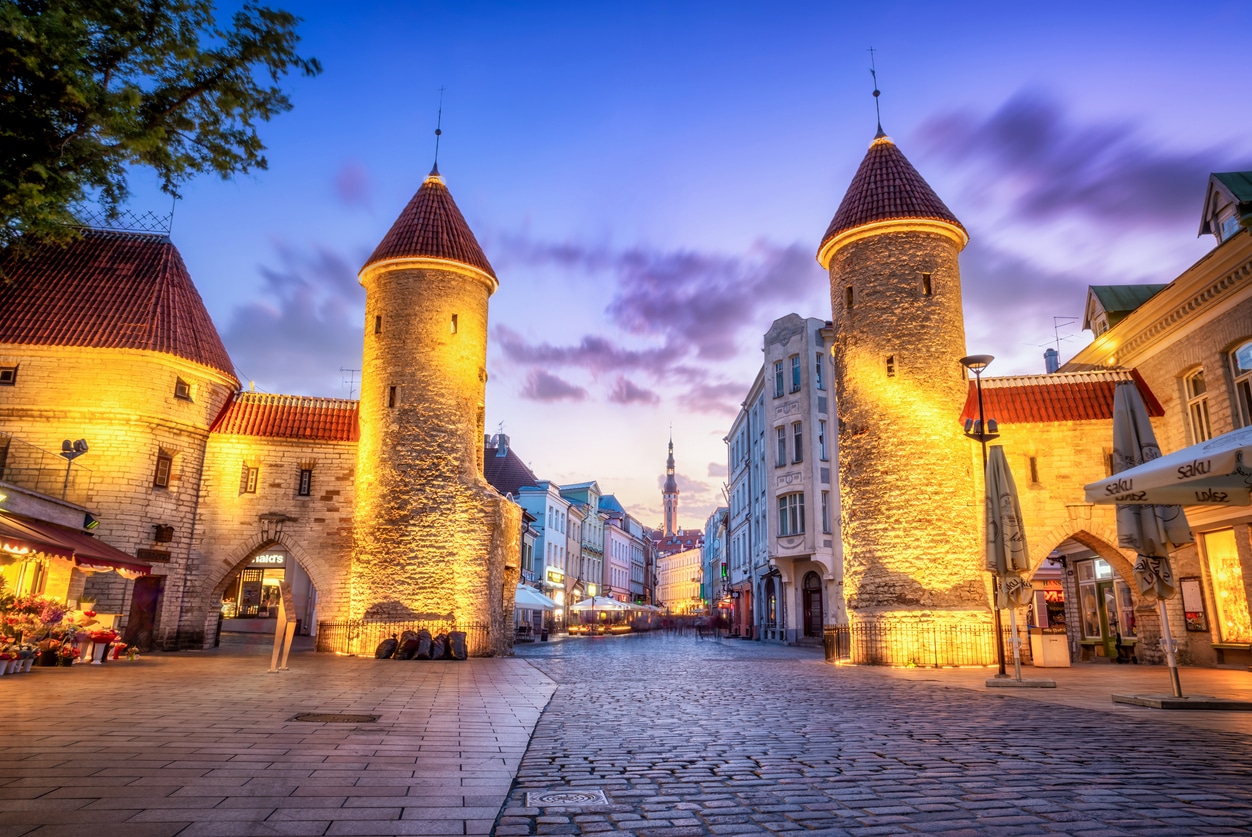
Weekend Trip to Tallinn from Riga
Tallinn is one of the most well-preserved medieval cities in Europe. Seeing the city while studying abroad in Riga, Lativa is easy and affordable. Round trip bus tickets range from 20-40 euros, and offer a scenic journey through the Baltic countryside. Climb the towering spire of St. Olaf’s Church for breathtaking city views, or step […]




